Are you tired of tripping over cords in your office? Do unsightly wires snag your guests’ attention instead of your gorgeous décor? If so, then this is the post for you! Learn how to hide office cords and give your space a clean, professional look.
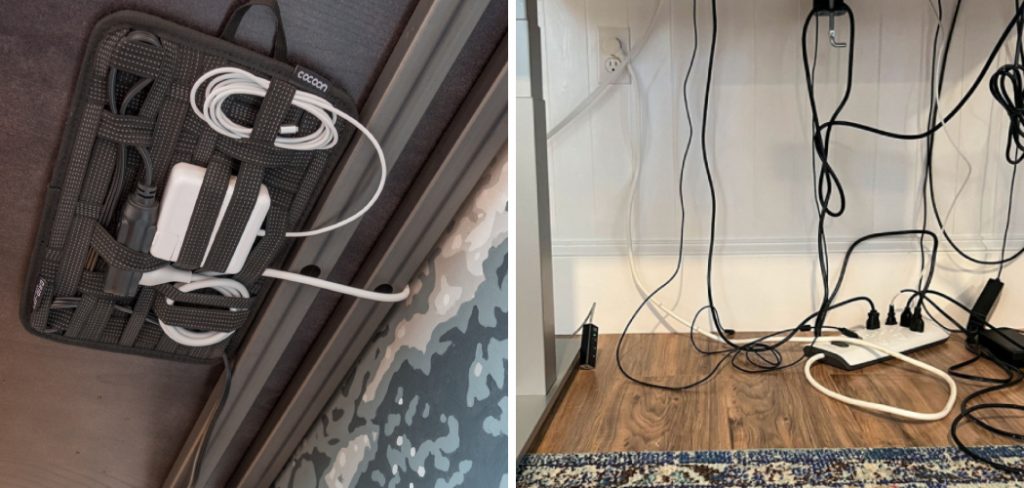
Whether it’s using cord covers or creative solutions such as container organizers, we’ve got all the tips and tricks to help you stay clutter-free. So get ready to wave goodbye to tangled masses of electrical wires — and say hello to an organized and beautiful workspace!
Why Hide Cords?
Before we dive into the different ways to hide office cords, let’s first talk about why it’s important. Beyond just aesthetics, hiding cords can also improve safety in your workspace. Tangled wires can be a tripping hazard and can even lead to fires if not handled properly.
Additionally, eliminating clutter from visible cords can help create a more productive work environment by reducing distractions. Overall, hiding office cords is a simple way to improve the functionality and appearance of your office.
Needed Supplies
Before getting started, it’s important to have the right supplies on hand. Here are some essentials you may need when hiding office cords:
Cord Covers:
These covers come in various sizes and can be attached to walls or floors to conceal wires.
Cable Ties:
Use these to group together and organize multiple cords. You can also find reusable ties for easy rearranging.
Cable Clips:
These clips attach cords to surfaces, keeping them in place and out of sight.
Container Organizers:
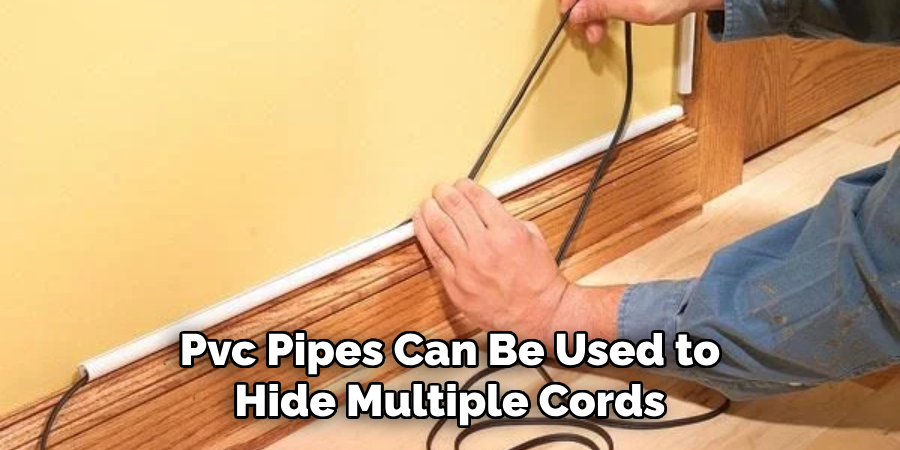
Hollow containers such as shoe boxes or PVC pipes can be used to hide multiple cords, while still allowing access when needed.
10 Simple Step-by-step Guidelines on How to Hide Office Cords
Step 1: Identify the Cords
Take a look around your office and identify which cords need to be hidden. This will help you determine the best solution for each area. It’s also a good idea to unplug any cords before working on them for safety reasons. It’s also helpful to label them with tape or labels so they can be easily identified in the future. Always make sure to use caution when handling any electronics.
Step 2: Assess Your Space
Consider where your outlets and power sources are located, as well as any obstacles that may hinder cord placement. This will help you determine the best route for hiding cords. But be careful not to obstruct ventilation or create a fire hazard.
You may also want to take note of any outlets that are frequently used, so you don’t accidentally cover them up. It’s also important to check with your building manager before making any changes to electrical wiring.
Step 3: Choose Your Cord Cover
Now that you know which cords need to be hidden and where it’s time to choose the right cover for the job. There are various options available, from simple plastic covers to more decorative fabric covers. Just make sure to measure the length and width of your cords to ensure a proper fit. You may also want to consider the color and design of the cover to match your office décor.
Step 4: Cut Cover to Size
If necessary, use a scissors or a utility knife to cut the cord cover to fit your desired length. Be sure to follow any instructions that come with the cover for proper cutting techniques.
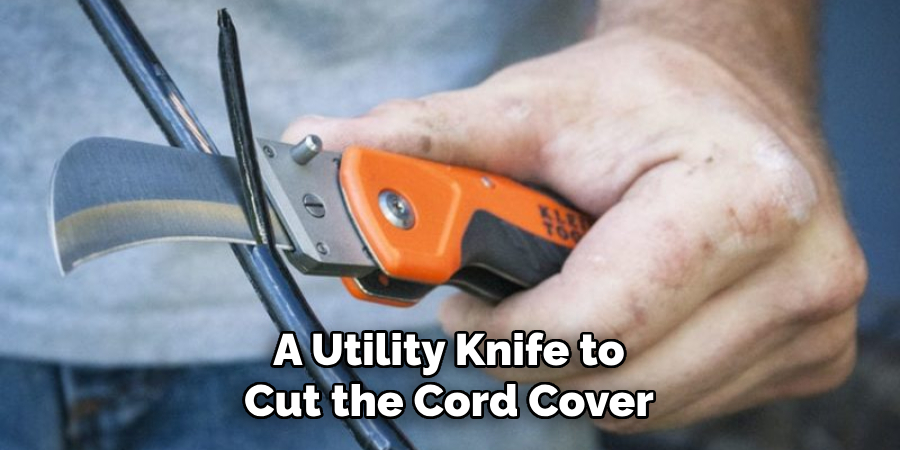
However, if you’re using a more flexible cover, you may be able to simply bend and manipulate it to fit around corners and obstacles. It may be helpful to use a ruler or use measuring tape for precise cutting. It’s always better to cut a little extra than not enough, so you can always trim off any excess later.
Step 5: Attach Cover
Once your cover is the right size, it’s time to attach it. This will vary depending on the type of cover you’ve chosen. Some covers are self-adhesive and can simply be stuck onto walls or floors, while others may require screws or adhesive tape.
Make sure to follow any instructions and use the appropriate tools for installation. You may also want to test the placement of your cords before permanently attaching the cover.
Step 6: Group Cords
For multiple cords that need to be hidden, use cable ties or clips to group them together neatly. This will make it easier to hide and manage them under the cover.
But be careful not to tie them too tightly, as this can damage the cords or make it difficult to access them in the future. It may also be helpful to use different colored ties or labels to differentiate between cords for easy identification.
Step 7: Use Container Organizers
For areas with multiple cords that need to be hidden, consider using a container organizer. This can be something as simple as a shoebox or more specialized options like PVC pipes.
Cut holes in the side of the box or pipe and thread the cords through, placing them inside the container. This will keep them out of sight while still allowing access if needed.
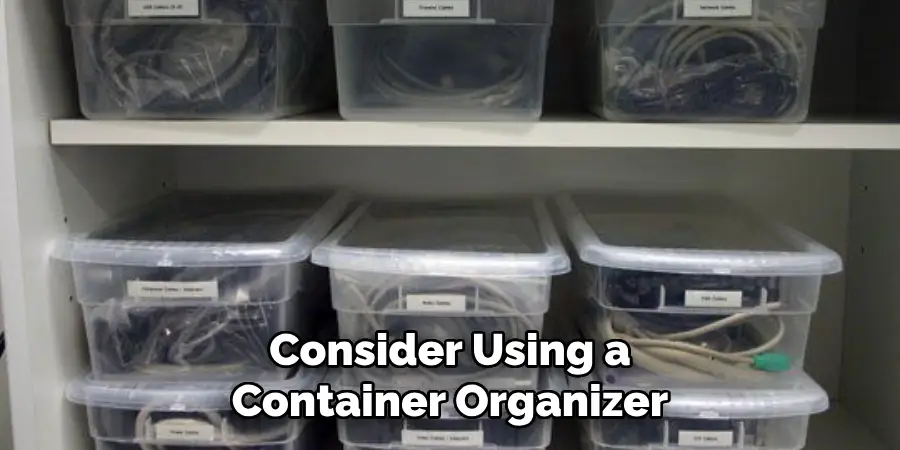
Step 8: Conceal Cords Behind Furniture
Another simple solution for hiding cords is to use furniture to your advantage. Place a bookshelf or desk in front of outlets and power sources to create a barrier between the cords and your eyes.
You can also use decorative items like plants or lamps to further conceal the cords behind them. Just make sure not to overload outlets and create a fire hazard. Otherwise, this can be a creative and easy way to hide cords.
Step 9: Hide Cords Under the Carpet
If you have carpeted floors in your office, you may be able to hide cords under them. Use a utility knife to carefully cut a small slit in the carpet and tuck the cords underneath. This can be a great option for long stretches of cords, as it keeps them out of sight and also prevents tripping hazards. Although, it’s important to be cautious and avoid cutting into any electrical wires when making the slits.
Step 10: Regular Maintenance
Finally, it’s important to regularly maintain your hidden cords. Check for any damage or wear and tear on covers or ties and replace them if necessary. You may also want to reorganize cords periodically to ensure they are still properly concealed. This will help prolong the functionality and appearance of your hidden cords.
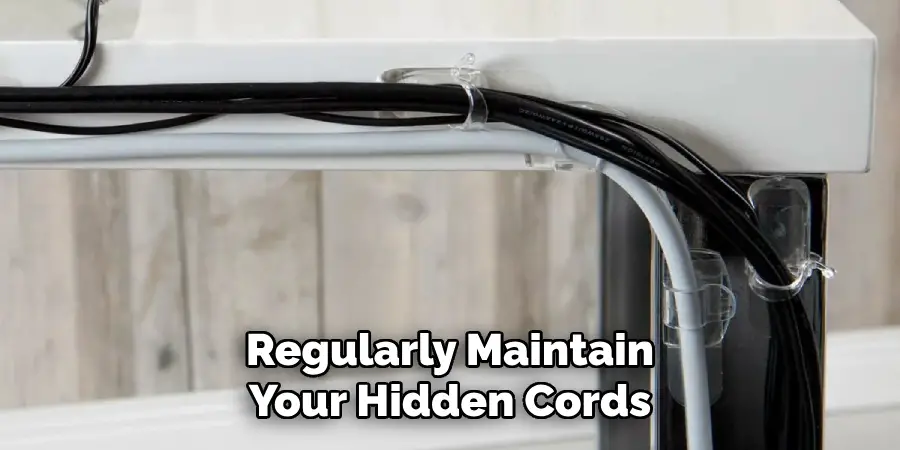
Following these simple guidelines on how to hide office cords, you can easily hide office cords and improve the overall functionality and appearance of your office space.
Not only will this create a more organized and professional environment, but it also eliminates safety hazards and potential tripping hazards. So next time you’re feeling overwhelmed by unsightly cords in your office, remember these steps and tackle them with confidence. Happy organizing!
Frequently Asked Questions
Q1: Do I Need to Unplug Cords Before Hiding Them?
A1: It’s always a good idea to unplug cords before working on them for safety reasons. This also allows you to easily identify and label the cords before hiding them.
Q2: Can I Hide All Types of Cords?
A2: Yes, you can hide all types of cords. Just make sure to properly group and organize them before concealing them under covers or containers.
Q3: Will Hiding Cords Create a Fire Hazard?
A3: As long as you follow the proper instructions and use appropriate covers and organizers, hiding cords should not create a fire hazard. However, it’s always important to regularly check for any damage or wear on the cords and replace them if necessary. Also, be sure not to overload outlets when concealing cords behind furniture.
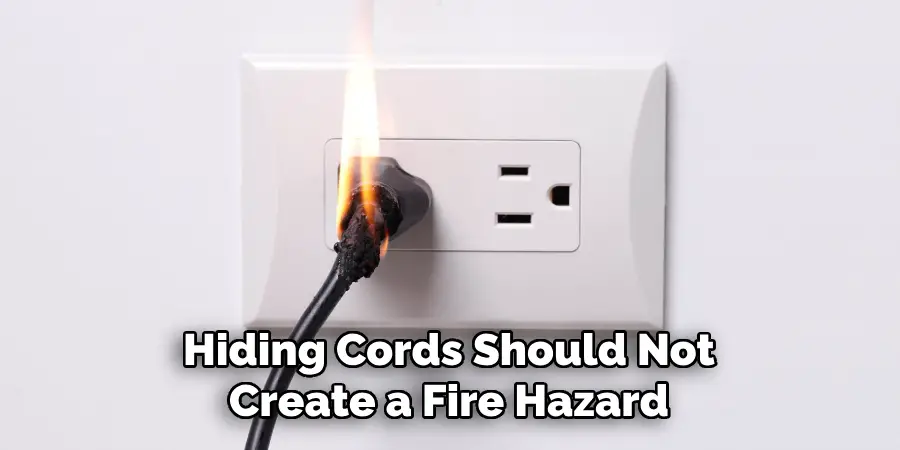
Q4: Can I Hide Cords Behind Furniture?
A4: Yes, you can definitely use furniture to your advantage when hiding cords. Just make sure not to overload outlets and create a fire hazard. Also, be cautious of any electrical wires that may be hidden behind the furniture.
Conclusion
In conclusion, it can be frustrating to try and keep your office cords hidden away. However, with the right tips and tricks on hiding office cords away, you can achieve a clean and clutter-free space in no time. Not only will this help make your space look more aesthetically pleasing, but it also reduces tripping hazards in any area that is filled with cords.
So take the time to find the best option for you and keep halls, floors, and desks free of tangled chaos by investing in cord management solutions today! With such a wide variety of options out there, such as cable ties or routed pathways, organizing your power cords has never been easier.
Put these strategies to use in your office soon and enjoy the productivity boost from living or working in an orderly space! Thanks for reading this article on how to hide office cords.

